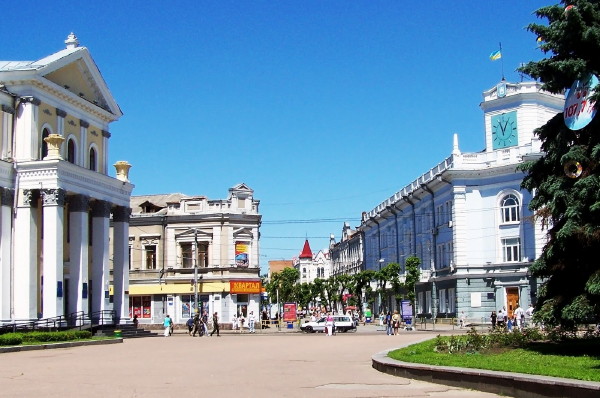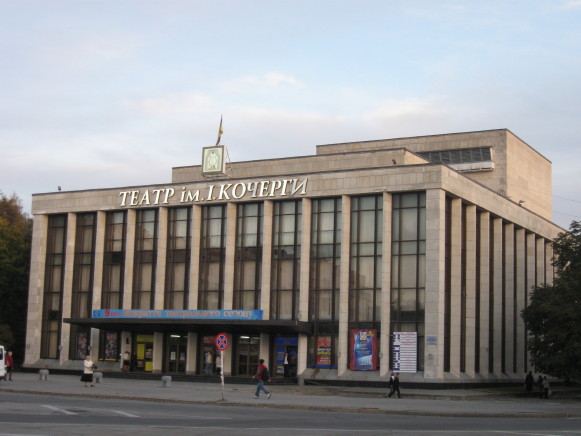Zhytomyr
Zhytomyr [Житомир; Žytomyr]. Map: III-9. A city (2013 pop 271,172) on the Teteriv River and an oblast (see Zhytomyr oblast) and raion center. It was founded, according to local legend, by a favorite of Askold and Dyr, Zhytomyr, in 884. It is first mentioned in the chronicles under the year 1240, when the town was destroyed by the Mongols. In 1320 Gediminas annexed it to the Grand Duchy of Lithuania and fortified it against the Tatars, who besieged it in 1399, 1469, 1482, and 1606. In 1444 Zhytomyr was granted the rights of Magdeburg law, and in 1471 it became a county center of Kyiv voivodeship. After the Union of Lublin of 1569 it became part of the Polish-Lithuanian Commonwealth. Its inhabitants revolted against their Polish overlords in 1594–6, 1618, and at the beginning of the Cossack-Polish War in 1648. Under Bohdan Khmelnytsky's rule the town served briefly as a company center of Kyiv regiment. In 1667 it was restored to Poland by the Treaty of Andrusovo, and in the following century it developed into an important Polish cultural center. It was the seat of a Roman Catholic diocese and the home of a Jesuit college (1720) and monastery (1724), a Bernardine monastery (1761), and a convent of the Sisters of Saint Vincent (1766). Its inhabitants joined the haidamaka uprisings in 1750 and 1768. After the partition of Poland in 1793, the town was annexed by Russia, and in 1804 it was made into the administrative center of Volhynia gubernia and the see of Volhynia eparchy. In the 19th century Zhytomyr developed into a regional manufacturing and trading center. Its main industries were candle and soap making, distilling, brewing industry, brick industry, flour milling, and tanning. Toward the end of the century agricultural machine building, metalworking industry, and tobacco industry were added. The number of enterprises rose steadily, from 14 in 1834 to 33 in 1861, 46 in 1898, and 63 in 1914. A railway link to Berdychiv was completed in 1896 and to Korosten during the First World War. By 1900 the town had a boys' and a girls' gymnasium, a free public library (1896), a theological seminary, a city theater, a museum (now Zhytomyr Regional Studies Museum) (1900), and a municipal hospital. Its population grew steadily, from 5,400 in 1798 to 16,700 in 1840, 38,400 in 1863, and 65,400 in 1897. The ethnic composition of the town at the end of the 19th century was: Jews, 36.7 percent, Ukrainians and Russians, 35.9 percent, and Poles, 13.4 percent.
During the Ukrainian struggle for independence (1917–20), at the beginning of 1918 Zhytomyr served briefly as the seat of the government of the Ukrainian National Republic. In August 1919 the Second Corps of the Ukrainian Galician Army fought the Red Army in the vicinity. During the Second World War the city was occupied by the Germans, and suffered considerable damage. It was reconstructed in the postwar period. By 1971 its population had grown to 167,000 and by 1979, to 244,000.
Today Zhytomyr is a major industrial and transportation center. Its chief industries are machine building and metalworking industry; they include the Elektrovymiriuvach instrument manufacturing consortium, the Avtozapchastyna automobile-parts plant, and the automatic machine-tool plant. The largest enterprises of light industry are the Zhytomyr Linen Manufacturing Complex and clothing, footwear, and hosiery factories. The food industry consists of large meat-packing, confectionery, flour-milling, baking, distilling, and brewing enterprises. There are several building-materials manufacturers, a synthetic-fabrics plant, and a paper factory. The woodworking industry manufactures furniture (see Zhytomyr Furniture Manufacturing Complex), musical instruments, toys, and souvenirs. The city's educational facilities include five higher educational institutions, eg, Zhytomyr State University, Zhytomyr National University of Agriculture and Ecology, Zhytomyr State Technological University, 9 specialized secondary schools, and 10 vocational schools. There are several scientific research institutes, such as the Institute of Hop Growing. Besides the Zhytomyr Regional Studies Museum there are literary memorial museum dedicated to Vladimir Korolenko (see Korolenko museums) and a memorial museum devoted to Serhii Korolov. The cultural facilities include an art gallery, a puppet theater, the Zhytomyr Academic Ukrainian Music and Drama Theater, and a philharmonic society. The chief architectural monuments are the Jesuit monastery, a Roman Catholic church (1744), Saint Sophia Cathedral (1737–51), the Transfiguration Cathedral (1866–74), the city hall (1789), and the circuit court (1898, now the National University of Agriculture and Ecology).
[This article was updated in 2014.]

.jpg)
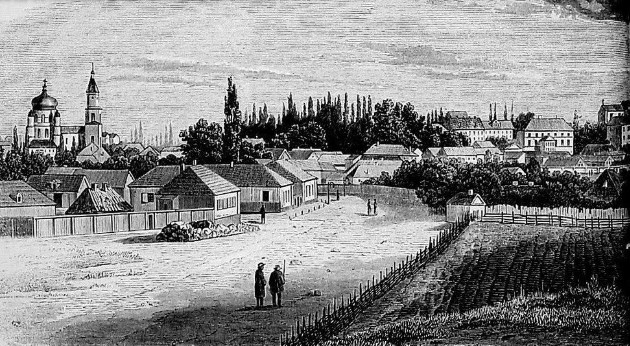
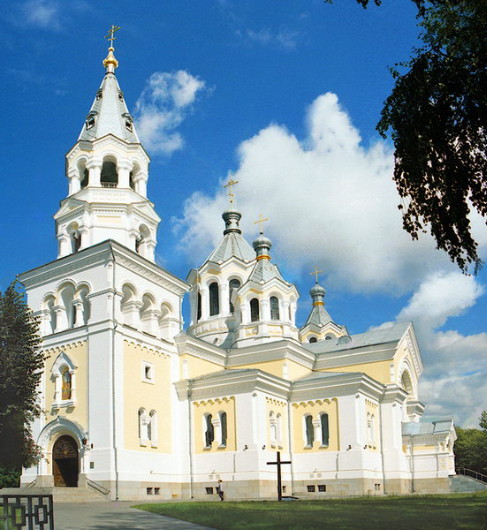
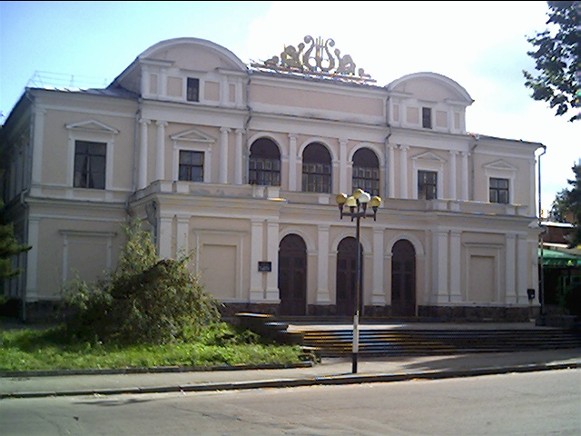
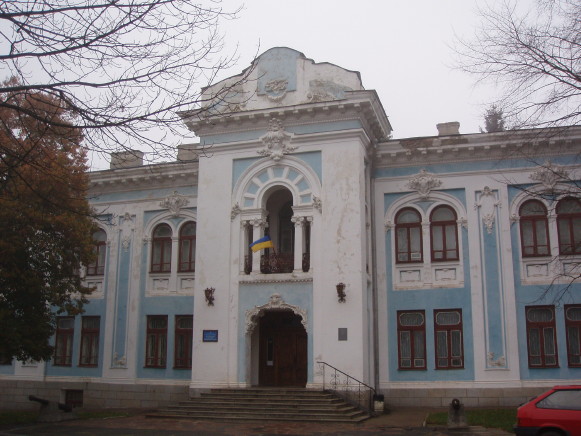
.jpg)
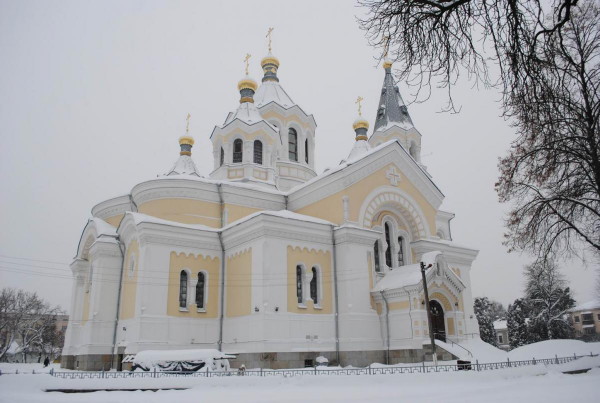
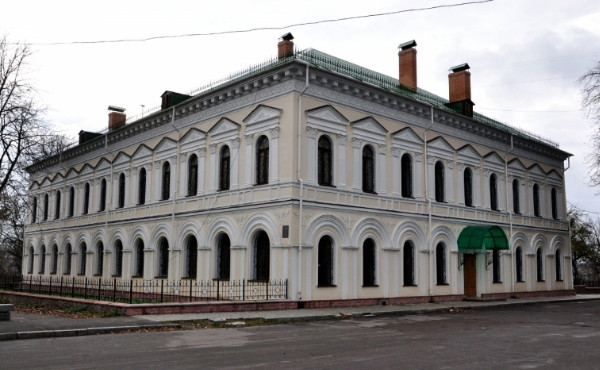
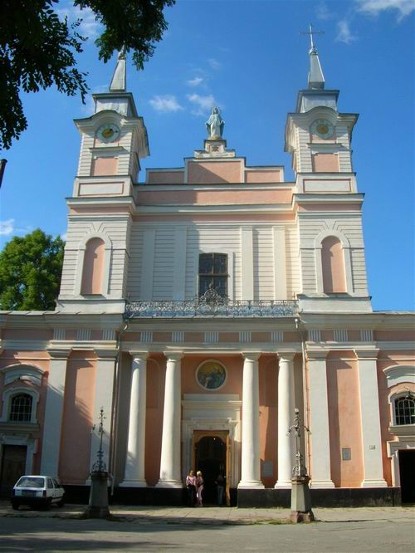
.jpg)
